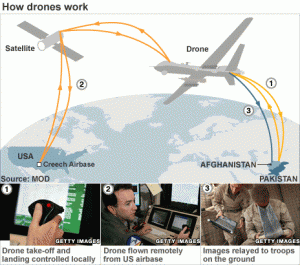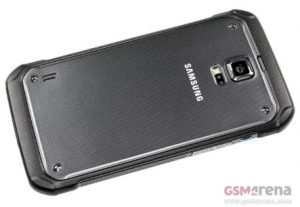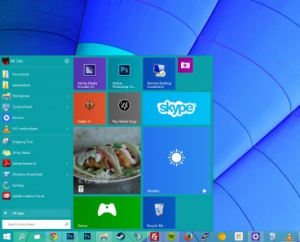To the military, they are UAVs (Unmanned Aerial Vehicles) or RPAS (Remotely Piloted Aerial Systems). However, they are more commonly known as drones.
Drones are used in situations where manned flight is considered too risky or difficult. They provide troops with a 24-hour “eye in the sky”, seven days a week. Each aircraft can stay aloft for up to 17 hours at a time, loitering over an area and sending back real-time imagery of activities on the ground.
Those used by the United States Air Force and Royal Air Force range from small intelligence, surveillance and reconnaissance craft, and some light enough to be launched by hand, to medium-sized armed drones and large spy planes.
What are the usages drones?
• Intelligence, surveillance, reconnaissance
• Checking for roadside bombs or devices on landing areas
• Listening to mobile phone conversations
• Helping understand daily routine of locals to see what is normal behaviour
• Close Air Support
• Following or attacking suspected insurgents
Drones are seen by many in the military as delivering precision strikes without the need for more intrusive military action. However, they are not without controversy.
These strange-looking planes carry a wealth of sensors in their bulbous noses: colour and black-and-white TV cameras, image intensifiers, radar, infra-red imaging for low-light conditions and lasers for targeting. They can also be armed with laser-guided missiles.
Each multi-million-dollar Predator or Reaper system comprises four aircraft, a ground control station and a satellite link.
Although drones are unmanned, they are not unpiloted – trained crew at base steer the craft, analyse the images which the cameras send back and act on what they see. I wonder if we are going to have a few for May 11!
Galaxy S6 ‘Active’ Leaks
It’s the best Samsung Galaxy S6, so far!
Fans of Samsung didn’t have much to complain about the Galaxy S6 (and the S6 edge) apart from the fact that the two phones didn’t feature waterproof bodies, something that the previous gen flagships did have on offer. However, as expected, Samsung is indeed working on bringing the waterproof feature (among other rugged use-centric features) to the Galaxy S6, but via the Galaxy S6 Active.
The yet-unannounced Samsung Galaxy S6 Active has been in the news a lot over the past few days. First we discovered that its model number would be SM-G890 and apparently its screen size is 5.5″.
 A new rumour has now surfaced claiming to give us the full spec list for the S6 Active. And to start with, it contradicts that previous finding about display size, saying it will sport a 5.1-inch QHD (2,560×1,440) panel as the ‘vanilla’ Galaxy S6.
A new rumour has now surfaced claiming to give us the full spec list for the S6 Active. And to start with, it contradicts that previous finding about display size, saying it will sport a 5.1-inch QHD (2,560×1,440) panel as the ‘vanilla’ Galaxy S6.
Moving on, we should also expect the successor to the Galaxy S5 Active to feature all of the other hardware innards of its non-rugged siblings, the S6 and S6 edge. So the same Samsung Exynos 7420 SoC, 3GB of RAM, 32GB of storage, 16MP rear camera, and 5MP front snapper.
The one thing that will reportedly change is battery capacity, rumoured to come in at a whopping 3,500 mAh. That’s more than what is inside the Galaxy Note 4 phablet, so we’re a little wary of this particular detail – but hoping it will turn out to be right in the end.
The added ruggedness of the Active handset, coupled with the bigger battery has led to an increase in size compared to the Galaxy S6. The S6 Active will measure 146.9 x 73.6 x 8.8 mm, as opposed to 143.4 x 70.5 x 6.8 mm for the S6.
What isn’t clear yet is if the S6 Active will come with a microSD card slot and a removable battery, unlike the S6 and S6 edge. Though, since it’s identical in every other respect, you probably shouldn’t hold your breath. No detail has been revealed about how rugged it will be, but these things should surface soon now that the leaks have started in earnest.
Windows 10 is great – but will it stop the PC from dying and taking Microsoft with it?
I’ve now been using Windows 10 for a month, and though it’s still just an early version with lots of rough edges, I’m convinced that it’s going to be a solid desktop operating system for the world’s billion-odd mouse-and-keyboard users.
If you’re old enough, cast your mind back to 1995 and the imminent release of Windows 95. The excitement that surrounded Windows 95 was a palpable, global phenomenon driven partly by insane marketing stunts, but also people were earnestly excited by the idea of a new, colourful, plug-and-play desktop OS.
 Since the mid-to-late 2000s, the PC industry has mostly been treading water or steadily declining, while smartphones and tablets have enjoyed disgusting levels of success that are way, way beyond peak PC. In 2013, global smartphone shipments — not all cell-phones, just smartphones exceeded 1 billion units. PC shipments maxed out at around 350 million per year in 2010, and are now starting to decline quite rapidly.
Since the mid-to-late 2000s, the PC industry has mostly been treading water or steadily declining, while smartphones and tablets have enjoyed disgusting levels of success that are way, way beyond peak PC. In 2013, global smartphone shipments — not all cell-phones, just smartphones exceeded 1 billion units. PC shipments maxed out at around 350 million per year in 2010, and are now starting to decline quite rapidly.
By the time that Windows 10 comes out in mid-2015, who knows how low new PC sales will be and of course, after the debacle of Windows 8 and the negative sentiment that it engendered, Windows PC stalwarts might be inclined to buy a Mac instead, or join the smartphone/tablet revolution. (And indeed, it says a lot that, while the PC industry has slumped over the last few years, Apple’s Mac division has enjoyed strong growth over the last few years.
This, I think, will be Windows 10’s undoing. Gone are the days of big, flashy OS releases. The annual releases of Android and iOS haven’t quite conditioned us to be completely oblivious and underwhelmed by operating systems.


.jpg)











